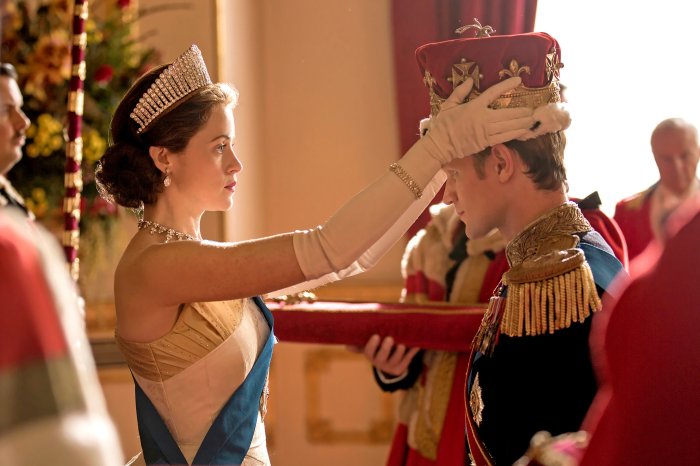We set the scene crown point – Crown Point, a name etched in the annals of history and literature, invites us on a captivating journey through time. From its strategic military significance to its evocative presence in James Fenimore Cooper’s masterpiece, Crown Point emerges as a multi-faceted gem that continues to inspire and intrigue.
Beyond its historical and literary significance, Crown Point captivates as a vibrant tourist destination, offering a glimpse into the past while immersing visitors in its enduring cultural legacy.
Crown Point: Historical Significance: We Set The Scene Crown Point

Crown Point, a strategically located fortress on the shores of Lake Champlain, played a pivotal role in the military conflicts that shaped North America. Its history is intertwined with the French and Indian War and the American Revolutionary War, witnessing the clash of empires and the struggle for territorial control.
Events and Figures Associated with Crown Point
In 1755, during the French and Indian War, Crown Point was captured by the British under General William Johnson. It became a major base of operations for British forces throughout the war. In 1775, at the outset of the American Revolutionary War, Ethan Allen and the Green Mountain Boys captured Crown Point from the British.
This victory boosted the morale of the American forces and demonstrated the growing strength of the revolutionary movement.
We Set the Scene: A Literary Exploration

Crown Point holds a significant literary legacy, particularly in James Fenimore Cooper’s acclaimed novel, “The Last of the Mohicans.” Cooper masterfully utilizes Crown Point to establish a vivid setting and atmosphere that immerses readers in the heart of the colonial frontier.
Cooper’s Literary Significance
Cooper’s depiction of Crown Point is not merely a backdrop but an integral element that shapes the narrative. He meticulously crafts a sense of place, bringing the fort and its surroundings to life. The towering stone walls, the bustling garrison, and the rugged wilderness surrounding Crown Point become characters in their own right, influencing the actions and destinies of the novel’s protagonists.
Setting and Atmosphere
Through Crown Point, Cooper creates a setting that is both evocative and suspenseful. The fort’s strategic location at the southern tip of Lake Champlain makes it a pivotal battleground, adding an element of danger and uncertainty to the story. The looming presence of the fort’s fortifications casts a shadow over the surrounding landscape, creating an atmosphere of tension and foreboding.
Contribution to the Narrative
Crown Point’s literary significance extends beyond its role as a physical setting. It also serves as a symbolic representation of the clash between civilization and wilderness, a central theme in “The Last of the Mohicans.” The fort’s imposing presence symbolizes the encroachment of European colonizers on Native American lands, while the surrounding wilderness represents the fading world of the Mohicans.
Conclusion
In conclusion, Crown Point’s literary significance in “The Last of the Mohicans” lies in its ability to create a vivid setting, establish a suspenseful atmosphere, and embody the novel’s central themes. Cooper’s masterful use of Crown Point enhances the reader’s experience, transporting them to the heart of the colonial frontier and immersing them in a world of adventure, conflict, and the clash between civilizations.
Crown Point in Art and Culture

Crown Point has been a muse for artists and writers for centuries, inspiring a wide range of creative expressions that capture its historical and literary significance. From paintings and sculptures to poems and novels, Crown Point’s artistic and cultural representations have contributed to its enduring legacy.
Artistic Depictions
Crown Point’s strategic location and architectural beauty have made it a popular subject for painters and sculptors. Artists such as Thomas Cole and Asher B. Durand depicted Crown Point in their landscapes, capturing its picturesque setting and historical importance. Sculptures, such as the “Champlain Memorial” by Frederick MacMonnies, commemorate the fort’s role in American history.
Literary Representations
Crown Point has also featured prominently in literature, serving as a backdrop for historical novels and plays. James Fenimore Cooper’s “The Last of the Mohicans” includes vivid descriptions of Crown Point and its surroundings. Samuel de Champlain’s account of his 1609 expedition to Crown Point provides a first-hand perspective on its early history.
Cultural Legacy
The artistic and cultural representations of Crown Point have helped shape its cultural legacy as a symbol of American history and a source of inspiration for artists and writers. These representations have contributed to the fort’s enduring popularity as a tourist destination and a site of historical significance.
To brush up on your knowledge of the Crown Point battlefield, consider taking a WSET Level 1 practice exam . This exam will help you assess your understanding of the site’s history and significance. Afterward, you can revisit We Set the Scene: Crown Point and delve deeper into the pivotal events that unfolded there.
Crown Point as a Tourist Destination

Crown Point stands as a testament to its rich history and cultural significance. Today, it has evolved into a captivating tourist destination that allures visitors with its historical charm, scenic vistas, and diverse offerings.
Nestled on the southern shores of Lake Champlain, Crown Point boasts a breathtaking natural setting that invites exploration. Visitors can embark on leisurely strolls along the waterfront, immersing themselves in the tranquil ambiance and capturing panoramic views of the lake and the distant Adirondack Mountains.
Crown Point State Historic Site, We set the scene crown point
At the heart of Crown Point’s allure lies the Crown Point State Historic Site, a sprawling complex that transports visitors back to the 18th century. Here, they can delve into the fascinating history of the fort, which played a pivotal role in the French and Indian War and the American Revolution.
The site encompasses meticulously reconstructed fortifications, barracks, and other structures that provide a glimpse into the lives of soldiers and civilians who once inhabited the fort. Guided tours led by knowledgeable historians bring the past to life, offering captivating insights into the battles, sieges, and daily routines that unfolded within these walls.
Fort Crown Point Museum
Adjacent to the historic site, the Fort Crown Point Museum houses an extensive collection of artifacts, documents, and exhibits that further illuminate the fort’s legacy. Visitors can explore interactive displays, examine original artifacts, and gain a deeper understanding of the fort’s significance in American history.
Camping and Recreation
Crown Point State Historic Site also offers a range of recreational opportunities for outdoor enthusiasts. Visitors can camp amidst the scenic surroundings, hike along nature trails that wind through the park, and enjoy swimming, fishing, and boating in the pristine waters of Lake Champlain.
Day Trip or Weekend Getaway Itinerary
For a memorable day trip or weekend getaway, consider the following itinerary:
- Morning: Explore the Crown Point State Historic Site, taking a guided tour of the fort and visiting the Fort Crown Point Museum.
- Afternoon: Pack a picnic lunch and enjoy a leisurely hike along one of the park’s nature trails, soaking in the stunning views of Lake Champlain.
- Evening: Set up camp at one of the park’s designated campsites and savor a campfire dinner under the starlit sky.
- Day 2 (if applicable): Embark on a kayaking or fishing excursion on Lake Champlain, immersing yourself in the tranquility of the natural surroundings.
The Legacy of Crown Point

Crown Point’s historical significance endures, shaping its present-day relevance. Its strategic location and pivotal role in conflicts have left an enduring mark on the region and the nation. Efforts to preserve and commemorate its heritage ensure its legacy remains alive, contributing to our understanding of the past and inspiring future generations.
Preservation and Commemoration
Crown Point has been designated a National Historic Landmark, recognizing its exceptional historical importance. Restoration projects have meticulously preserved its fortifications, providing a tangible connection to the past. The Crown Point State Historic Site offers immersive experiences, including guided tours, reenactments, and educational programs, fostering a deeper appreciation for its legacy.
Contemporary Relevance
Crown Point’s legacy extends beyond its historical significance. It serves as a reminder of the sacrifices made in shaping our nation and a symbol of the enduring spirit of resilience and determination. Its preserved fortifications offer a unique educational opportunity, showcasing the ingenuity and strategic thinking of past military engineers.
Moreover, Crown Point remains a popular tourist destination, attracting visitors eager to explore its rich history and scenic beauty.
FAQ Summary
What is the significance of Crown Point in American history?
Crown Point played a pivotal role in the French and Indian War, serving as a strategic military outpost and a focal point of conflict.
How does James Fenimore Cooper portray Crown Point in “The Last of the Mohicans”?
Cooper uses Crown Point to create a vivid setting that evokes a sense of danger and intrigue, reflecting the tumultuous events unfolding during the French and Indian War.
What are some of the must-see attractions at Crown Point?
Visitors can explore the historic fort, immerse themselves in interactive exhibits, and enjoy scenic views of Lake Champlain.